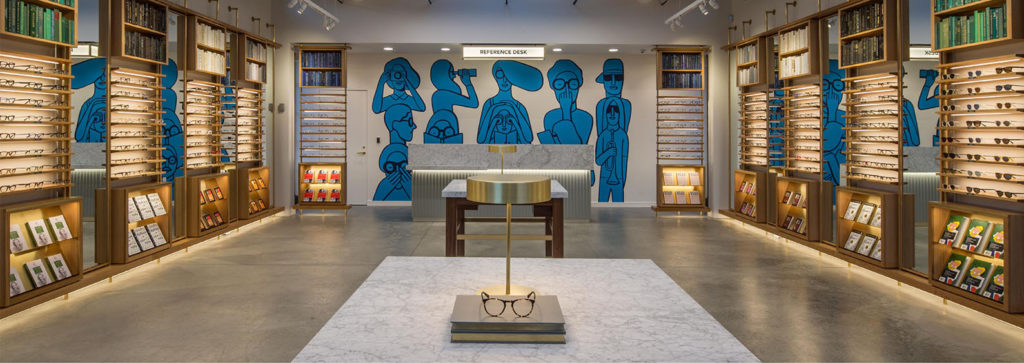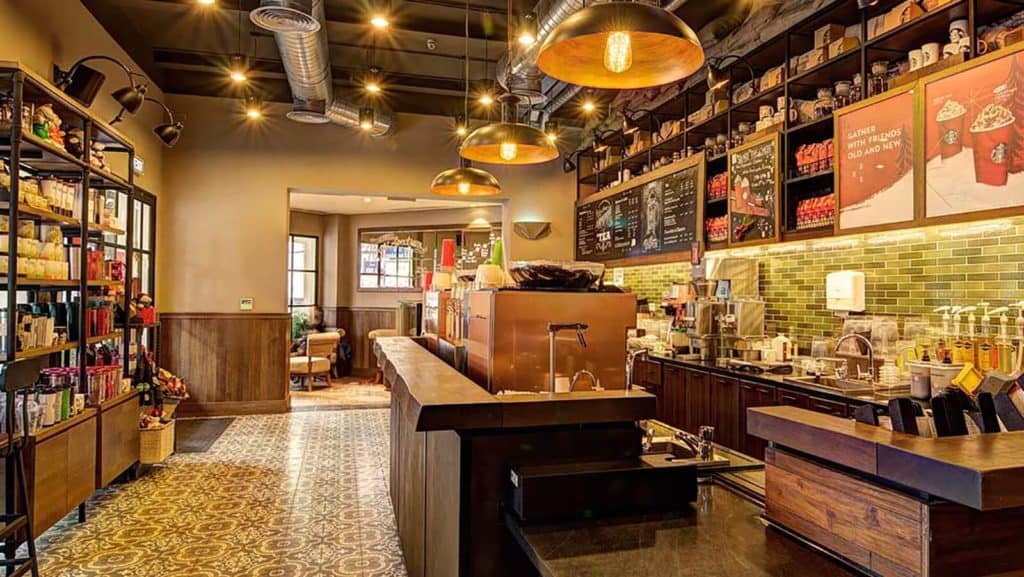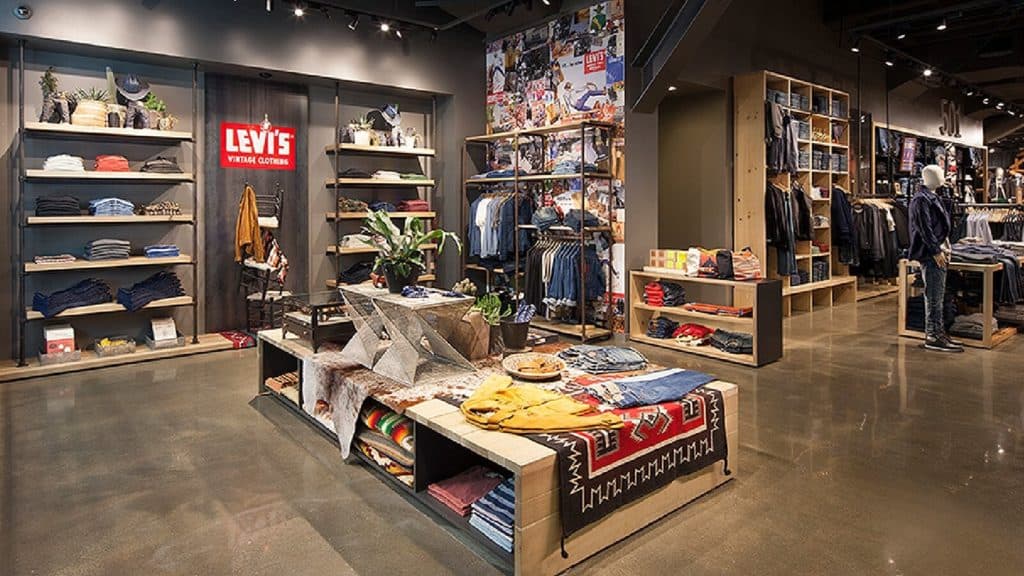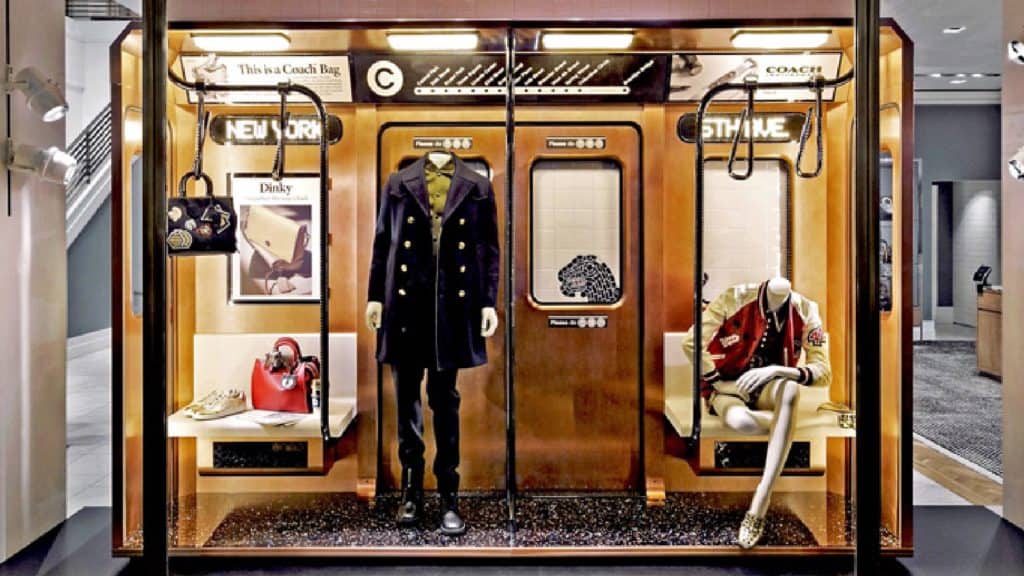Learn how to use millwork installation to tell your brand story
It’s impossible to walk past a LEGO store without being drawn in by its color, creativity, and sense of possibility. A peek inside reveals children and adults smiling, playing, and exploring—proof of how millwork installation, by the Dynamic team, brings a brand to life.
Your brick-and-mortar stores need to evoke emotion, action, and connection. LEGO is just one example of how millwork becomes more than doors, molding, trim, cabinetry, and window frames—it becomes part of the brand experience.
Think of millwork as your silent storyteller. It grabs attention, communicate your brand ethos, and compels people to step inside—often in just two seconds.
How can you use millwork installation to make people stop, pause, think, connect, and walk in?
“The millwork and fixtures are like the stage design for everything in the store,” says Evan Giniger, Founder and President of Dynamic, “They set the stage for the whole show, where the products are the actors working in an environment that was designed just for them. Every detail matters and is noticeable to the audience, or the shoppers.”
How Leading Retailers Use Millwork Installation To Tell Their Brand Story
Leading retailers including Warby Parker, Glossier, Apple, and Starbucks are key examples of using millwork to tell very different yet compelling brand stories.
The common thread between these brands is intentional design—using millwork to communicate brand values and identity while creating retail spaces that feel authentic and inviting.
- Warby Parker has reimagined what an eyewear store can be—inviting customers to see, quite literally, from a new perspective. Their stores don’t feel clinical or transactional; they feel curated, warm, and human. The millwork plays a central role in this transformation.
Built-in shelving, brass accents, and sculpted display tables reference the brand’s literary roots, while every fixture connects back to perception—the idea that how we see the world shapes how we feel within it. Through these details, Warby Parker’s millwork tells a story of thoughtful design, clarity, and connection without the need for overt marketing.
Warby Parker trusts Dynamic across all their retail stores - Glossier uses millwork to make its minimalist, human-first brand feel approachable and distinct in a crowded beauty market. Rounded counters, built-in arches, and softly textured surfaces create a sense of calm and invitation—encouraging touch and interaction, transforming product testing into a social, sensory experience.
Glossier’s millwork reflects the brand’s ethos of confidence, connection, and community—subtle design cues that make the store itself part of the brand’s story. - Apple’s millwork mirrors its core design principles of clarity, precision, and simplicity. Seamless wood tables, clean lines, and integrated fixtures create calm, open spaces where technology feels accessible rather than complex. Every material choice, from light oak to glass and aluminum, reflects Apple’s brand ethos of thoughtful design that prioritizes usability, comfort, and quiet confidence.
- Starbucks uses millwork to create a sense of familiarity that feels both global and local. Warm woods, curved counters, and layered textures give each store a consistent look while still allowing for regional materials and cultural details.
The result is a design language that feels intentional, approachable, and recognizable anywhere in the world. Through careful craftsmanship and material choices, Starbucks—a Dynamic client—communicates reliability and comfort, creating an environment where people know what to expect, even in a new place.
Dynamic and Starbucks—10+ years of retail design excellence
How Millwork Shapes Pre-Purchase Brand Perception
Millwork deeply influences how people feel about a purchase—often before they even step inside in your store.
- Decompression Zone: it’s in the first few feet inside your store where people make immediate decisions about what to expect and if your store is for them. Your shoppers subconsciously absorb cues about your brand and how this relates to their own identity.
Retailers such as The North Face, Nike, and lululemon quickly tell the aspirational story and appeal to how we “want to be seen” or “what we want to feel and do.” - Branding and Consistency: it all comes down to the details, materials, and overall flow of your stores. While shoppers may not consciously notice trim, wall paneling, shelving, or edging details, these elements quietly communicate who you are—establishing a connection before a single word is spoken.
Vuori uses millwork to express its clean, coastal-inspired brand through natural materials, warm wood tones, and consistent detailing. Modular fixtures and thoughtful craftsmanship create a calm, approachable environment that feels unmistakably Vuori in every location. - Customer Navigation and Store Experience: strategic placement of millwork helps guide customers through your store, quietly pointing them to and engaging them with your feature and hero products, promotions, and limited releases to influence desire and wants.
Coach uses millwork to guide customers naturally through key collections. Built-in shelving, framed display walls, and open sightlines create a clear path from signature handbags to limited editions and seasonal features.
Where we shop reflects how we see ourselves—and how we want to be seen. The materials, finishes, and craftsmanship within a retail space communicate value, personality, and intent long before a purchase is made.
How to Use Millwork, Fixtures, Graphics, and Signage to Create Shareable Brick-and-Mortar Retail Design
Millwork, fixtures, graphics, and signage are more than design features—they’re essential marketing tools in a connected, shareable world.
How your store looks and feels shapes what customers capture, post, and remember, turning the in-store experience into a key part of your marketing strategy.
Here is how you can use millwork, fixtures, graphics, and signage to create shareable brick-and-mortar retail design:
- Design focal points that invite interaction
Customers are naturally drawn to spaces that feel intentional and visually striking. A sculptural fixture, feature wall, or layered display gives people a reason to pause and engage. These elements photograph well and help anchor your brand visually across social channels.
MAC’s dynamic in-store displays and window installations use bold color, lighting, and texture to create photo-ready moments that showcase each collection. - Blend digital and physical storytelling
Integrating technology into millwork installation—through screens, motion, or lighting—adds depth to your brand narrative and creates dynamic moments worth capturing.
When digital features are framed within natural materials or architectural details, they feel immersive and memorable rather than promotional.
The North Face’s “Basecamp” concept stores embed digital storytelling into wood-paneled environments creating an authentic, shareable adventure aesthetic. - Use materials that reflect your brand personality
Material selection defines how customers feel in your space—whether grounded, luxurious, playful, or refined. Consistent use of texture, tone, and craftsmanship creates a sensory connection that customers remember and want to share.
Levi Strauss stores pair natural wood millwork with industrial metal accents, creating a tactile, timeless aesthetic that reinforces the brand’s craftsmanship and authenticity.
Levi Strauss has trusted Dynamic with their 1,000+ stores for 25+ years - Create visual rhythm with fixtures and layout
The spacing, proportion, and repetition of fixtures shape how people move through your store. A balanced layout creates visual harmony and camera-friendly sightlines, making it easy for customers to capture your space as part of their experience.
Coach uses symmetrical millwork, framed shelving, and open pathways that lead customers through key product stories while maintaining visual consistency across locations.
Dynamic and Coach—25 years of partnership in retail design and millwork installation - Incorporate branded graphics
Subtle graphics integrated into walls or fixtures feel elevated and cohesive, allowing your products—not your signage—to speak loudest.
When done well, these details reinforce brand cues and photograph naturally without visual clutter.
Everlane uses minimal typography and clean wall graphics that reflect its transparent, pared-back brand ethos. - Signage that complements
Signage should guide customers and reinforce brand identity without overpowering the millwork or architecture. Materials, scale, and lighting should feel consistent with the surrounding finishes, helping signage become part of the story rather than a layer on top.
AllSaints uses metal lettering and backlit signage integrated into distressed wood façades, creating seamless brand expression from street to sales floor. - Balance consistency with local expression
A strong design system can be adapted across locations without losing its essence. Keeping your millwork, fixtures, and graphic language consistent while introducing local materials or cultural elements makes your stores feel distinctive—and more likely to be shared.
IKEA’s urban concept stores reimagine the brand’s recognizable wood and white palette through smaller, locally inspired layouts that photograph beautifully in every market.
A picture is worth a thousand words. Great design stirs emotion, sparks action, and creates connection.
That’s exactly what Dynamic does with millwork installation—designing and building brick-and-mortar stores that speak volumes for your brand.
At Dynamic, our unique combination of IN-HOUSE offerings makes us your single source provider for all your millwork installation and design needs. No one understands retail installation better than we do.
Contact us to learn how we handle any aspect of your business—from an individual retail store to a global roll out. We are here for you.



